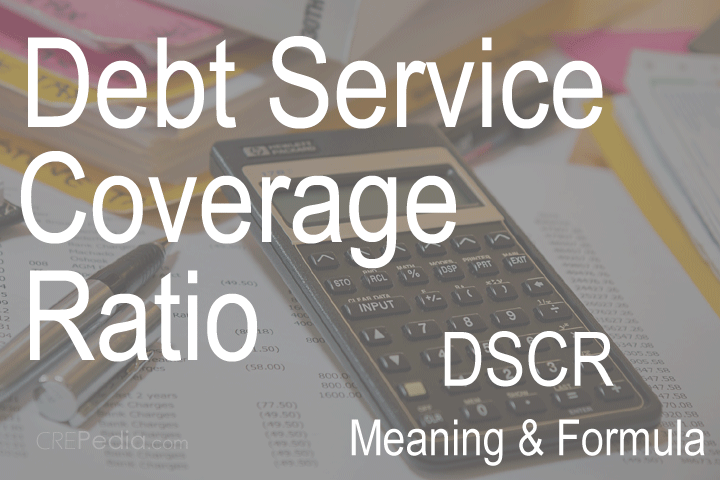What Is The Debt Service Coverage Ratio?
The debt service coverage ratio, or DSCR, is the ratio of net operating income (NOI) to the total debt service amount for the same period of time. It is a metric that helps gauge whether an investment property's financial performance is sufficient to pay for any financing on the property. The DSCR helps measure whether there is enough cash flow available for debt service.

The DSCR Formula
The ratio is generally calculated for the period of a year. The debt service coverage ratio equals the annual net operating income (NOI) divided by the annual debt service (ADS).
DSCR = Annual NOI / ADS
How To Calculate The Debt Service Coverage Ratio
-
Step 1 - Calculate NOI: To use the formula, the net operating income will have to be calculated. The NOI is the revenue less expenses. The NOI can be calculated on a proforma cash flow statement for the property, or can be taken from actual financials if available.
NOI = Revenue - Expenses
-
Step 2 - Calculate ADS: Calculating the annual debt service (ADS) is the next step. The annual debt service is the sum of all loan payments made over the period of one year. For example, if the monthly loan payment is $1,000, then annual debt service will be $12,000. ($1,000 per month X 12 months = $12,000)
ADS = Sum of Loan Payments for Year
-
Step 3 - Plug In NOI and ADS into the DSCR Formula: Once the NOI and ADS is calculated, then the numbers can be plugged into the DSCR formula to measure the cash flow available for debt service.
Why Is The DSCR Important?
The debt service coverage ratio is important because it indicates whether there is enough income to make the payments on a loan. If the ratio is greater than 1.0, then there is enough income to make the loan payments
The DSCR is an important metric to help gauge the capacity of the investment to pay for itself and cover the repayment of the debt. If the ratio is less the 1.0, then the investment asset does not generate enough operating income to pay for the loan.
If the income is insufficient to pay for the debt, then the asset will not be attractive to lenders. To increase the ratio, the investors will have to reduce the loan payment which can be done by increasing the initial equity investment, extending the loan term, and/or decreasing the interest rate.
When the debt coverage ratio is greater than 1.0, it implies there is enough income generated to pay the loan. The greater the number, the more margin of security there is for the investor and the bank. The DSCR is in effect a measure of the burden and risk of the debt load of an investment property.
In practice, banks and other financial institutional establish their own criteria for what they want the minimum DSCR to be. The may specify a minimum DSCR value of 1.2 or greater. The greater the DSCR, the greater the margin of safety, and thus less risk of default.
DSCR Example
To illustrate the debt coverage service ratio, if a rental property's annual NOI is $60,000 and the total annual loan payments are $30,000 ($2500 per month x 12 months), then the DSCR is 2.0. This means there is more net income coming in than needed to make the loan payments.
DSCR = $60,000 / $30,000 = 2.0